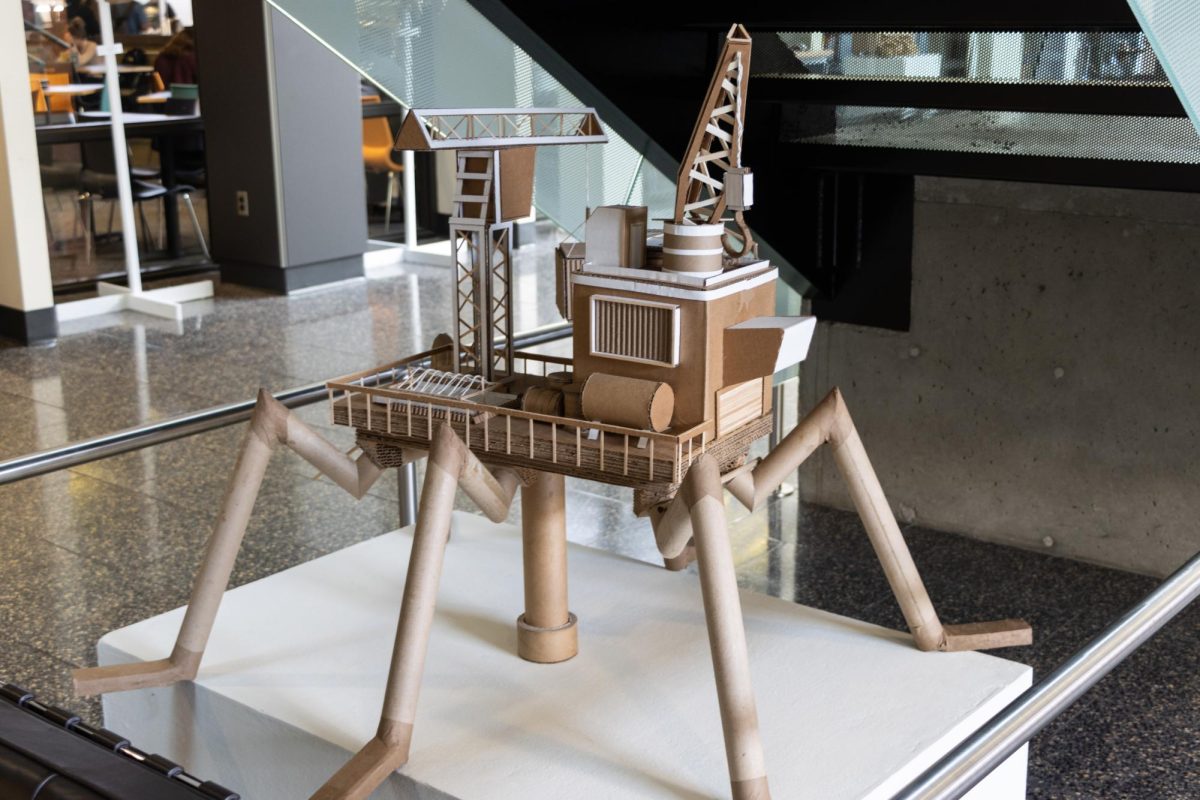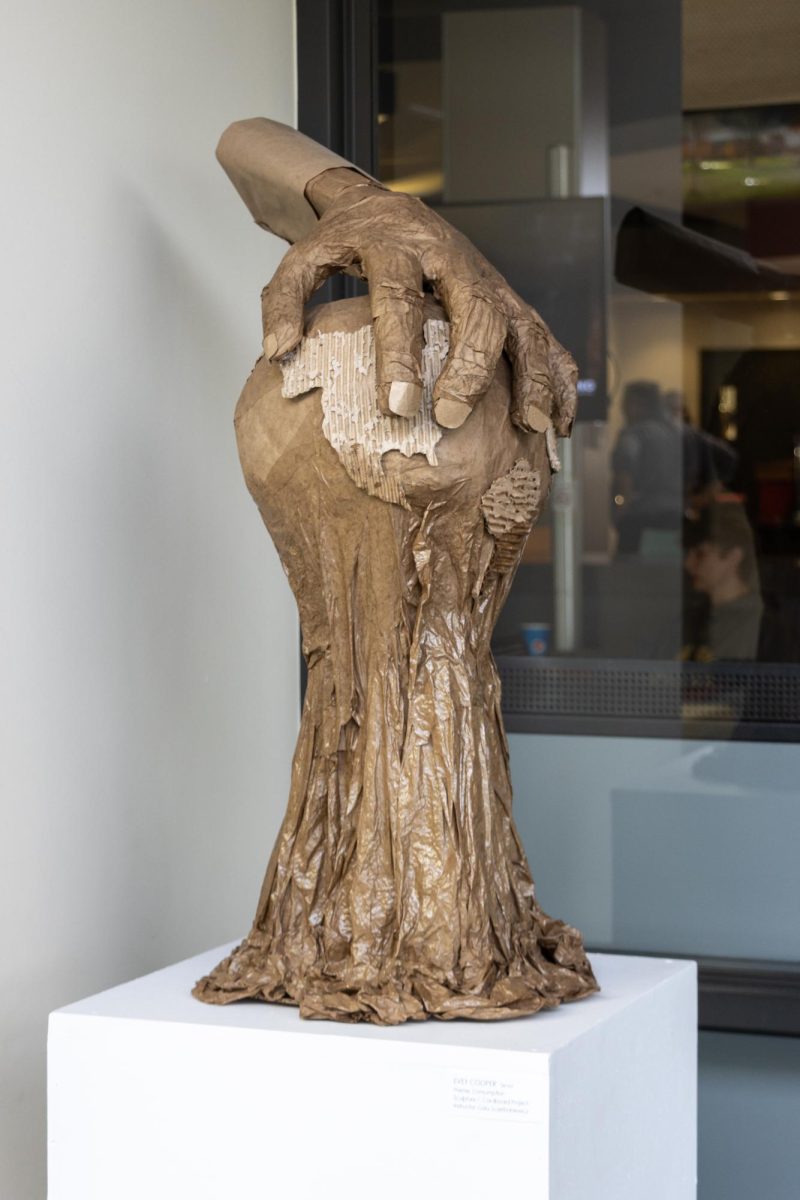
The walk through the Student Union concourse outside of the food court is a tad more eye-catching this week as a pop-up exhibit has studded it with cardboard sculptures.
Student creations from the Sculpture and Ceramics program appeared outside of the food court in the Student Union late last week and will remain there until Oct. 27 as part of Campus Sustainability Month.
The projects were assigned to students in introductory sculpture classes taught by professors Gary Sczerbaniewicz and Joshua Maier. Using recycled materials obtained from the Facilities Department, like stacks of flattened cardboard boxes and dozens of mailer tubes, students were tasked to interpret the themes of consumption and spirit animals through their creations.
In an email to The Northerner, Sustainability Coordinator Tiffany Budd said the “project shows that even a material commonly seen as trash/recycling can be repurposed to make wonderful pieces of art.”
Set in the nooks and crannies of the SU, the consumption-inspired sculptures stand as a reminder of the constant push and pull between humans and the natural forces of Earth. The spirit animal sculptures are designed to be wearable and demonstrate the vast opportunities even mundane and disposable materials possess.
“Cardboard is plentiful, it’s everywhere. And you could just basically garbage pick it and make sculpture out of it. So it’s something that they could easily fold into outside of the class format,” said Sczerbaniewicz.
Many of the artworks riff off of the grim scenario the world finds itself in as the fight against climate change becomes more urgent. A common interpretation for the theme of consumption was tied to the potential calamity of the human mentality to squeeze the planet for all its resources in the name of business and economic prosperity.
Evey Cooper’s sculpture depicting the planet clung to strands of slime as a human hand pulls it away represents how people in power often dictate the outcome of natural resources with monetary value as a core motive, the artist explained. Although this was her vision for the project, she admitted that the elasticity of the artwork may result in people taking away other meanings.
“I kind of wanted to make something that was more interpretable, open,” reflected Cooper. “It was interesting to hear during critique what people thought.”
Another standout piece by Max Kitzmiller lies discreetly under a staircase, artfully portraying a crawling embodiment of an oil drilling station that seems to feed on the dwindling resource, analogous to how human societies and economies have come to rely on it.
Other projects were utterly attention-grabbing, such as the large and ornate moose head or the strikingly majestic-appearing moth model.
Although the pop-up ends tomorrow, Sczerbaniewicz hopes the exhibition’s placement in such a high-traffic area intrigued students who normally don’t get to see the program’s creations. “The general hope is that the campus at large realizes that we’re here and we are making some pretty engaging work,” said the professor.
Correction: This story previously misspelled Max Kitzmiller’s name as Max Kitemiller.


